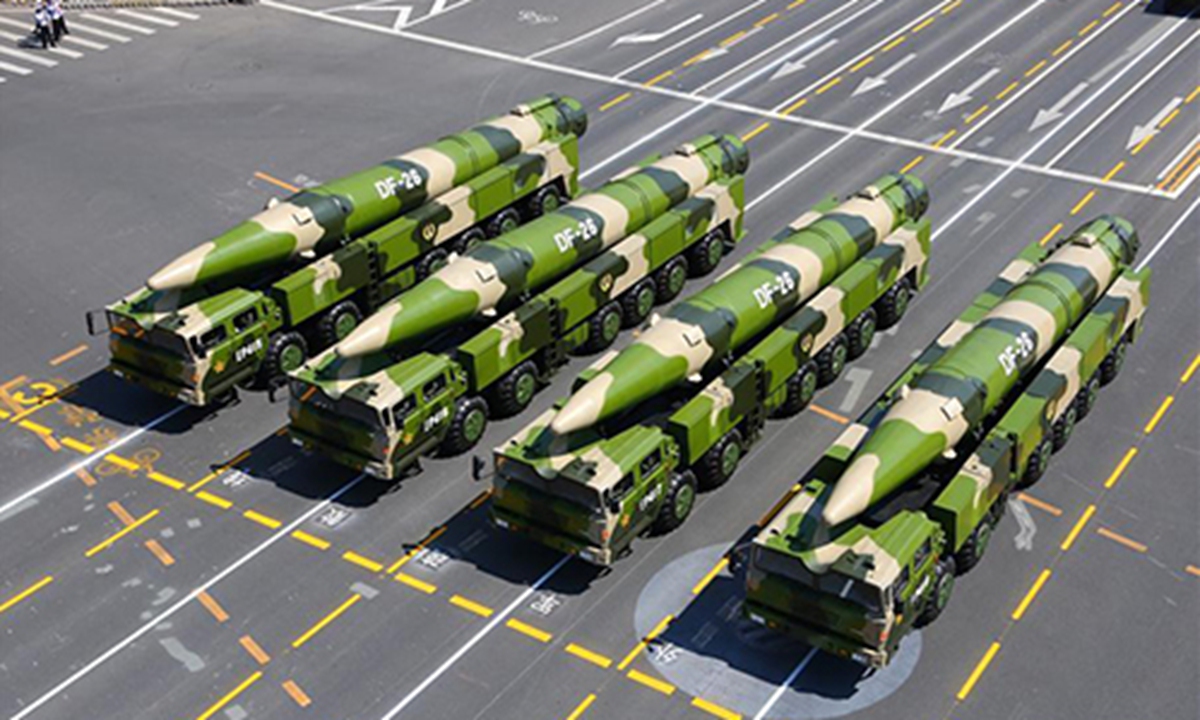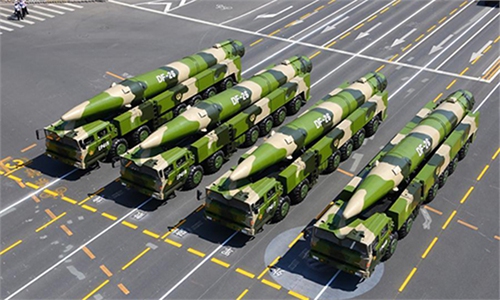
File photo taken on Sept. 3, 2015 shows DF-26 missiles attending a military parade in Beijing, capital of China. It has been a big year for China's military as the People's Liberation Army (PLA) is to celebrate its 90th birthday. As Aug. 1, the birthday of the PLA, approaches, the country's army has shown how much its military capacity has grown and how committed it is to maintaining world peace. The PLA has come a long way since its birth during the armed uprising in the city of Nanchang on August 1, 1927, when it had only 20,000 soldiers. Ninety years later, the country boasts 2 million servicemen, according to a national defense white paper titled "China's Military Strategy," published in 2015. Besides the growth in numbers, the PLA has armed its soldiers with world-class equipment. As of June 2017, the Chinese military had participated in 24 UN peacekeeping missions, sending 31,000 personnel, 13 of whom lost their lives in duty. Since 2008, the Navy has dispatched 26 escort task force groups, including more than 70 ships for escort missions in the Gulf of Aden and off the coast of Somalia. More than 6,300 Chinese and foreign ships have been protected during these missions. (Xinhua)
China's surroundings could soon be infested with foreign aircraft carriers targeting China, with the latest media reports saying the UK is planning to send an aircraft carrier strike group to the western Pacific as soon as early 2021, while India is eyeing the development of a third aircraft carrier.
Both UK and India's aircraft carrier plans will likely face technical issues, and with China's anti-ship ballistic missiles, which are feared even by US aircraft carriers, the two countries' carriers will be militarily insignificant and could be only political stunts, Chinese experts said on Sunday.
The British navy will dispatch an aircraft carrier strike group, including the aircraft carrier Queen Elizabeth, to waters near Japan as soon as early next year, Japan's Kyodo News Agency reported on Saturday, citing Japanese government sources.
The British carrier strike group is expected to conduct joint exercises with US and Japanese forces amid "the growing maritime assertiveness of China in the region," the report said.
"The Queen Elizabeth aircraft carrier has not yet achieved full combat capability, and its aircraft are also not yet fully ready. Sending a carrier that is not combat-ready to the western Pacific will only expose its shortcomings," Song Zhongping, a Chinese military expert and TV commentator, told the Global Times on Sunday.
India is another country that has an aircraft carrier plan in mind against China. Indian Navy chief Admiral Karambir Singh said a third Indian aircraft carrier is an operational necessity to counter China's aircraft carrier development plan, the Hindustan Times reported on Saturday.
Song said that India should first finish building its second operational carrier, the country's first indigenous aircraft carrier, before considering a third one. The second one's construction has been delayed for a long time.
India's indigenous aircraft carrier will be commissioned by the end of 2021 or early 2022, a senior Indian Navy officer announced on Wednesday, the Press Trust of India (PTI) reported at that time.
Due to India's weak shipbuilding industry and previous record, this is an over-optimistic forecast, Chinese analysts said, noting that even it is commissioned, it could face technical issues in use.
In the possible development of a third carrier, India could become heavily reliant on US support for key technologies, including nuclear-powered devices, catapults and aircraft. This is also bad for India as it will become more dependent on the US, Song said.
Overseas media reported that the Chinese People's Liberation Army (PLA) launched multiple anti-ship ballistic missiles, including the DF-21D and DF-26, into the South China Sea in a military exercise in August after the US sent two aircraft carriers to the region for exercises in July.
It is believed the exercises have deterred US aircraft carriers' provocative activities near China since then.
The UK and India would also need to worry about Chinese anti-ship ballistic missiles, but unlike the US, the two countries are not expecting to actually confront China with their aircraft carriers, Song said.
They only want to show their military presence, and whether their military capabilities are actually significant is not the focus, Song said, noting that they could support the US aircraft carriers in forming into multiple aircraft carrier combat groups, but the US carriers would play the central roles.


